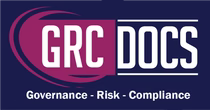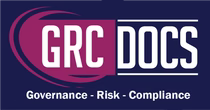SOC2 Information Security Policy Template Download
Introduction
Information security is at the heart of protecting an organization’s most valuable assets—its data, systems, and people. An Information Security Policy provides a structured framework that ensures confidentiality, integrity, and availability of information across the business. It also enforces compliance with regulations, strengthens defenses against cyber threats, and guides staff and third parties in handling sensitive data responsibly. By applying this policy step-by-step, organizations can establish a robust security culture that reduces risks, safeguards trust, and enables smooth business operations.

Step-By-Step Guide For Using The Information Security Policy
Step 1: Understand the Policy Scope
-
What to do: Confirm that the policy applies to all stakeholders, including staff, contractors, consultants, visitors, and third parties.
-
Why it matters: Security risks can originate from anyone interacting with organizational systems. Defining scope ensures inclusivity and clarity in responsibilities.
Step 2: Define Roles and Responsibilities
-
-
Management: Provide oversight, allocate resources, and ensure compliance.
-
IT Department: Implement and maintain security systems, train employees, and monitor compliance.
-
Employees: Protect data confidentiality, adhere to security rules, and report incidents.
-
-
Why it matters: Clear accountability avoids confusion and ensures quick, coordinated action.
Step 3: Strengthen Human Resource Security
-
-
Perform background checks for all employees.
-
Require signing of confidentiality agreements before accessing sensitive data.
-
Provide annual security awareness training.
-
-
Why it matters: Employees are the first line of defense—ensuring they are trustworthy and security-conscious reduces insider threats.
Step 4: Secure Networks and Communications
-
-
Identify and document communication flows.
-
Use only approved communication channels (corporate email, authorized chat tools).
-
Apply strong controls such as firewalls, secure gateways, and monitoring tools.
-
-
Why it matters: Protects sensitive communications from interception and misuse.
Step 5: Implement Physical Security Controls
-
-
Lock away sensitive documents when desks are unoccupied.
-
Restrict unauthorized physical access to workspaces.
-
Lock screens and devices when unattended.
-
-
Why it matters: Physical breaches often bypass digital controls; securing the environment ensures holistic protection.
Step 6: Enforce Data Security Practices
-
-
Classify and label data appropriately.
-
Protect data at rest, in transit, and during processing.
-
Use integrity-checking mechanisms for systems and software.
-
Prevent unauthorized data sharing or leaks by enforcing NDAs.
-
-
Why it matters: Protects against both accidental leaks and deliberate misuse of information.
Step 7: Manage Information Assets
-
-
Maintain an updated inventory of all assets, including hardware, software, and services.
-
Prioritize resources based on classification, criticality, and business value.
-
Define security roles and responsibilities for both employees and third-party stakeholders.
-
-
Why it matters: Helps track, monitor, and protect critical business resources effectively.

Step 8: Enable Logging and Monitoring
-
-
Collect logs from systems, servers, applications, and critical services.
-
Use SIEM (Security Information and Event Management) tools for centralized monitoring.
-
Set alerts for anomalies deviating from normal baselines.
-
-
Why it matters: Provides visibility into threats, enabling faster detection and response.
Step 9: Strengthen Supplier Security
-
-
Conduct vendor security assessments before engaging suppliers.
-
Require compliance with industry standards (ISO 27001, SOC 2, PCI-DSS).
-
Update agreements as business, laws, or regulations evolve.
-
-
Why it matters: Third-party risks can be as damaging as internal ones; supplier vetting ensures secure partnerships.
Step 10: Prepare for Incidents and Vulnerabilities
-
-
Maintain a Business Continuity and Disaster Recovery (BC/DR) Plan and Incident Response Plan.
-
Test these plans at least annually.
-
Deploy vulnerability and patch management processes.
-
Schedule penetration testing and assessments quarterly.
-
-
Why it matters: Being prepared minimizes downtime, ensures resilience, and addresses vulnerabilities before they are exploited.
Step 11: Apply Encryption and Storage Security
-
Encrypt data in use, in transit, and at rest.
-
Use secure file transfer methods (SFTP, HTTPS, FTPS).
-
Partner only with cloud storage providers meeting compliance standards.
-
Apply redundancy across geographic locations for data resilience.
-
Why it matters: Encryption and secure storage ensure sensitive information remains protected at all times.
Step 12: Maintain Risk Management and Compliance
-
-
Conduct bi-annual security risk assessments to identify vulnerabilities.
-
Follow regulatory frameworks in Australia and New Zealand (Telecommunications Acts, Privacy Acts).
-
Provide regular security awareness training to staff.
-
Conduct annual policy reviews, updating based on audits, risks, and law changes.
-
Document exceptions and ensure approval by senior management.
-
-
Why it matters: Risk management and compliance ensure long-term effectiveness, legal alignment, and continual improvement.
Conclusion
The Information Security Policy provides the foundation for protecting organizational assets from ever-evolving threats. By following these twelve steps—from defining scope and responsibilities, to implementing strong physical, technical, and procedural safeguards—organizations can ensure data confidentiality, integrity, and availability. Equally, regular training, risk assessments, and compliance reviews foster a culture of awareness and accountability.





